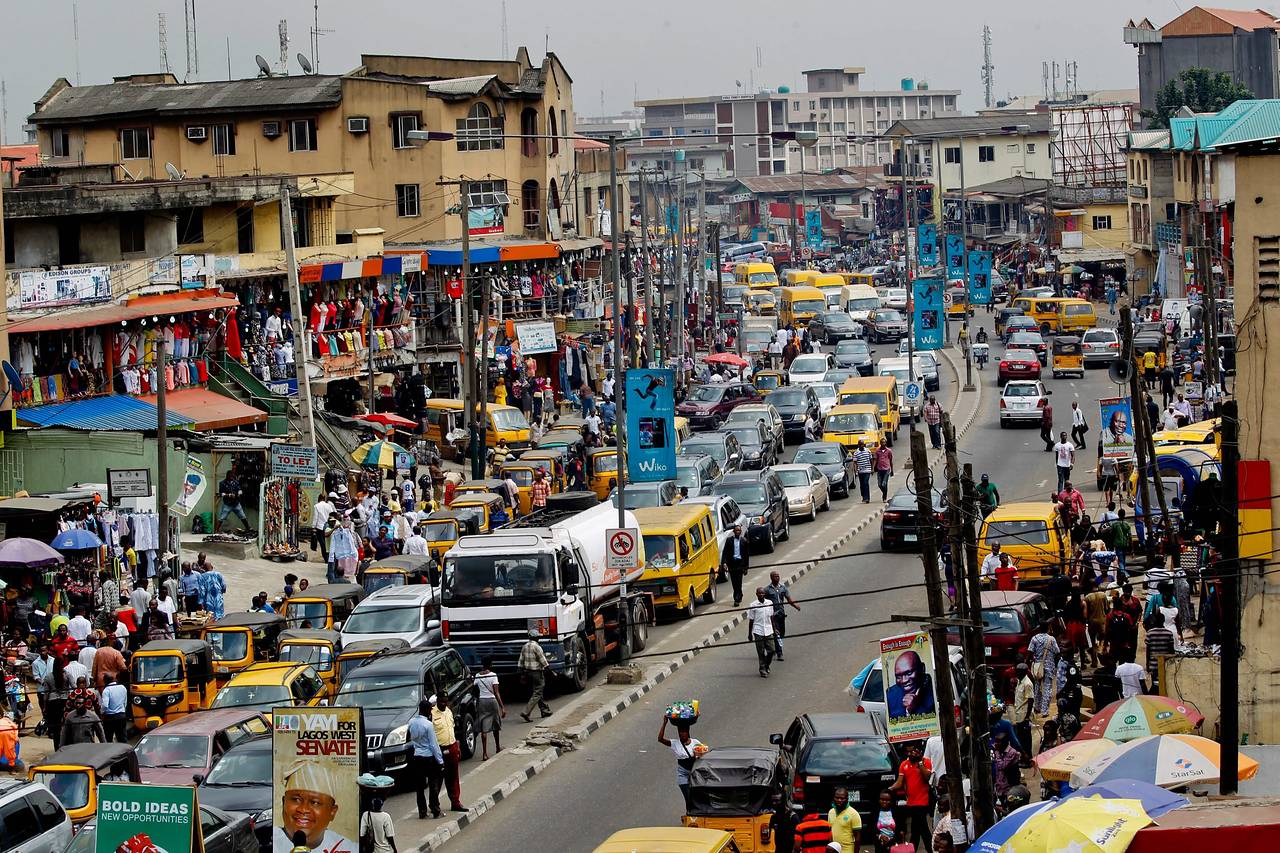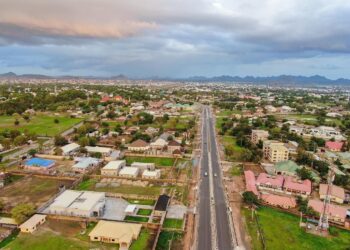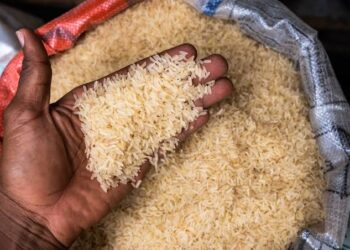The Nigeria’s crude oil production for August 2020, according to the Organization of Petroleum Exporting Countries (OPEC), increased from 1.35 million bpd in July, a 0.6% increase to 1.35 mbpd.
At the beginning of the quarter, OPEC and its allies such as Russia agreed in their meeting to ease record oil supply curbs from August and taper cuts to 7.7 million bpd till December. Since May, OPEC has been cutting output by 9.7 million bpd or 10% of global supply, after the COVID-19 virus was deemed to have destroyed a third of global demand.
However, fears of a second wave of the coronavirus are weighing heavily on the market, and OPEC said that “a second strong wave” could deepen the hit on demand to 11 million bpd this year. Additionally, the international oil benchmark, Brent Futures, surged by 8.4%, supported by an improvement in Chinese factory data, rising energy demands, and hopes for an agreement in the United States on more coronavirus-related economic stimulus – reaching a peak of $45.58 during the quarter before settling at $40.95 by the end of the quarter.
The 2nd Quarter 2020 (Q2 2020) shows that the Nigeria’s Gross Domestic Product (GDP) decreased by -6.10% (year-on-year) in real terms, and aggregate GDP stood at N34,023,197.60 million in nominal terms.
The Q2 2020 growth rate of -6.10% indicates a drop of -8.22% points, and on quarter-on-quarter basis, a fall of -7.97% points when compared to the first quarter of 2020 (1.87%).
Overall, the nominal growth rate was -16.81% points lower than recorded in the second quarter of 2019, and -14.81% points lower than recorded in the first quarter of 2020.
Inflation
Nigerian headline inflation rose for the 13th consecutive month to a 30-months high in September 2020. The Consumer Price Index (CPI) which measures inflation maintained its upward trajectory, as headline inflation just hit 13.71%, from 12.82% in July.
On a month-on-month basis, the headline index was up by 1.34%, 9 bps higher than 1.25% recorded in July. The uptick largely reflected the increase in the food component, which rose to 16.00% in August from 15.48% recorded in the prior month. It is the highest increase in food inflation since November 2019, pressured due to floods, a weaker naira, and clashes between herders and farmers.
The food index which accounts for more than half the inflation basket, is now at its highest level since March 2018 and could be further pressured amidst a shortage of domestic food supply.
Core inflation, a good indicator of the long-term inflation trend as well as future inflation, rose to 10.52% in August from 10.10% in the prior month. We are starting to see the cost reflective power tariff and how continuous adjustment in the price of Premium Motor Spirit (PMS) impacts on this component.
Capital importation and Foreign Exchange reserves
Inflow in the I&E FX Window surged this month, as total FX inflows into the Nigerian economy increased by 118% from $428.7 million in the month of August 2020 to $936.2 million in the month of September 2020. This is because the Central Bank finally switched on the tap in the I&E FX Window.
The significant spike in foreign inflows was on the back of the resumed FX intervention by the apex bank after 5 months on the sidelines. The foreign inflow from the apex bank accounted for 46.4% of the total inflow in September 2020, with an inflow of $434.5 million.
The efforts by the Central bank were supported by foreign inflows from other local sources, as domestic participants dominated foreign exchange inflows. The foreign inflow from other local sources advanced by 13% to $411.7 million in September 2020 from $364.2 million in August 2020, accounting for 43.98% of total foreign inflow.
Foreign inflow from FPIs also witnessed a significant boost, signaling a gradual recovery of foreign investment. The foreign inflow from FPIs surged by 300% to $36.8 million in September 2020 from $9.2 million in August 2020.
This accounts for 9.6% of the total foreign inflow, while foreign inflows from other foreign sources bucked the trend, decreasing by 4% to $53.2 million in September 2020 from $55.3 million in August 2020.
The external reserves held steady this month despite the resumed FX sale by the apex bank, as the improvement in crude oil prices provided support to the reserves. The external reserves advanced marginally by 0.2% to $35.74 billion in September 2020 from $35.67 billion in August 2020.
Purchasing Managers Index (PMI)
Scarcity of dollar and depressed oil prices showed the Manufacturing PMI in the month of September at 46.9 index points, which indicates a contraction in the manufacturing sector for the fifth consecutive month, after previously recording expansions for 36 consecutive months. Of the 14 surveyed subsectors, only 4 subsectors reported expansion. The sectors that reported expansion include electrical equipment, transportation equipment, cement, and nonmetallic mineral products.
The PMI for the Non-manufacturing sector stood at 41.9 points in September 2020, indicating a contraction for the sixth consecutive month. Of the 17 surveyed subsectors, 3 sectors reported growth in the following order: water supply; sewage & waste management; arts, entertainment & recreation; and professional, scientific & technical services, while the remaining 14 subsectors reported declines.
The effects of the economic lockdown caused by the coronavirus pandemic have obviously continued to weigh down on activities in the manufacturing and non-manufacturing space. Adding to these is the inadequacy of economic stimuli, as seen in some economies, which led to speedy recovery in the economic activities of those climes.
Financial market
– Fixed income market
Activities in the fixed income market picked up in September after a relatively quiet trend last month. The bullish momentum was driven by the unexpected rate cuts at the September 2020 MPC meeting, coupled with the reduced sale at September 2020 bond auction.
Monthly yields for the benchmark securities monitored declined across all maturities on a month-on-month basis except for the 10-year maturity, which advanced by 18 bps MoM. Average yields on the sovereign bonds with 3-year, 5-year, and 20-year maturities declined by 88 bps, 107 bps, and 16 bps respectively.
All eyes were on the MPC meeting which held on 22nd September 2020, as market participants awaited the monetary authority’s response to the rising inflation rate and further clarity on the multiple FX circular released by the CBN. The MPC slashed its monetary policy rate by 100 bps to 11.5% during its September 2020 meeting, bringing the benchmark rate to the lowest since 2016. The asymmetric corridor around the MPR was also reviewed to +100/-700bps from +200/- 500bps.
The September Bond auction was held shortly after the MPC meeting, where the DMO offered ₦145 billion across all maturity. The DMO decided to follow the footstep of the CBN and sold ₦103.81 billion out of the ₦145 billion offered; thus, selling just ₦6.81 billion and ₦4.60 billion on the 25-year and 30-year bond, compared to the ₦40 billion offered on both maturities respectively.
The stop rate for the 6-year, 15-year, 25-year, and 30-year bonds printed at 6%, 8.52%, 8.9%, and 8.94% respectively at the auction on Wednesday, 23rd September 2020, as against 6.70%, 9.35%, 9.75% & 9.90% respectively at the previous auction. Consequently, towards the end of the month, the bullish trend strengthened further as the unmet bid at the auction filtered into the secondary market.
– Foreign Exchange market
In Q3 2020, the Naira appreciated in 2 months out of 3 at the I&E FX Window, with the average exchange rate of the currency to a unit of the Dollar settling at ₦386.01 in September. Total monthly turnover for Q3 2020 at $3.8 billion, surpassed that of Q2 by 45%. In September, the apex bank resumed intervention at the I&E window, selling a total of $290 million spot and $240 million forwards which eased the pressure on the Naira.
In addition to the relief provided by the resumed intervention of the apex bank on the I&E FX Window during the quarter, the apex bank has been clamping down on foreign exchange abuses. According to the bank, this is responsible for the disparity in the rate of the naira on the I&E FX Window and the parallel market. The apex bank recently rolled out a circular that significantly restricted FX transfers and usage in domiciliary accounts with banks. These new measures coupled with the resumed intervention on the I&E FX Window pushed the Naira up during the quarter on both the I&E FX Window and the parallel market.
Equities market
The third quarter Q3 2020 defied all expectations and printed positive returns with every month in Q3 posting monthly gains. The influx of half year results coupled with tempting dividend payouts in August and September stirred up some actions in the local bourse.
The toast of the quarter was surprisingly the decision of the MPC (Monetary Policy Committee) towards the end of the quarter, which triggered participation from the typically quiet local institutions (PFAs) in the equity space. The MPC held its meeting on September 21 and 22, cutting the MPR to 11.50%, an indication that the low yield environment plaguing the market is here to stay.
With inflation at 13.22%, local investors with liquidity were not comfortable re-investing at yields as low as 1% in the fixed income space. These Domestic institutional investors responded with decent demand for MTNN, WAPCO, and tier-1 lenders, bolstering the market to hit a 7-month high as foreign-sell pressure remained muted. Since the MPR cut, there has been more than a 100% jump in average daily volume and value traded, with approximately 480 million units and ₦5.7 billion being the new daily average, from 200 million units and ₦2 billion respectively.
Foreign investors continue to focus on fungible stocks – NEWGOLD, AIRTELAF, and SEPLAT – which has been the strategy since it became difficult for them to repatriate funds out of Nigeria. The CBN decided to intervene in the I&E window for the first time in September – since March, offering a combination of forwards and spots in cumulative trade of about $130 million weekly. However, this remains to be favorable for foreign portfolio investors who have cash equity mandates.
For the third quarter, the Industrial Index emerged the strongest gainer, up by 8.14%. It was followed by the Banking index (10.08%), and the Consumer Index (2.74%), while the Oil and Gas index was down by (-0.68%).
The quarter ended on a positive note as the NSE ASI gained 9.61% quarter on quarter while the month of September was up 5.96%. Year – to date negative return was nearly wiped out at -0.02%.
Expectations for the coming months in the year 2020
With no word on when talks on a new stimulus package might resume and no movement on benefits for tens of millions who lost their jobs to the US crisis, crude oil demands may remain significantly depressed for an extended period of time. Additionally, as more countries go back on lockdown and the looming resurgence of the virus inducing fear, upward price pressure on crude may be subdued.
The main source of inflationary pressure has been passed through from the recent naira depreciation, compounded by FX restrictions and under-supply. This in turn has pushed transactions into the parallel market, where the exchange rate is significantly weaker. The President’s order to ban access to foreign currency for food and fertilizer imports could also stoke inflation, as businesses would look to the parallel market for dollars.
The government’s move to end fuel subsidies and raise electricity tariffs will add to consumer’s costs.
We believe that this trend could prove persistent with the CBN’s recent policy aimed at boosting credit growth and FX availability still constrained. Nigeria’s inflation has continuously stayed above the 6% to 9% band set by the CBN, with no clear signs of abating, as the borders remain closed.
What Commercio Partners’ experts expect …
The contraction in both the Manufacturing and Non-manufacturing sectors can be attributed to the scarcity of dollars, falling oil prices, as well as limited fiscal support that continues to put pressure on the economy.
- We expect to see stifled growth within these spaces, which could also impact the unemployment rate in the coming months.
- We expect foreign inflows to improve further in the coming months, as the apex bank continues to intervene in the market, coupled with the renewed foreign investors’ appetite.
- We expect the anticipated ₦1.7 trillion liquidity inflow from OMO maturity repayment and Bond coupon payment to sustain the bullish bias in the fixed income market.
- We expect to see more interventions in the I&E window from CBN, though the volume may be miniscule. The excess liquidity in the market will sustain the bullish run in the equities market, given the decent demand from local institutions chasing limited supply.
- We expect foreign investors to maintain their quiet stance and continue to make use of unconventional means to exit.

























.gif)






